In the ever-evolving world of digital marketing, and as eCommerce and social media continue to soar in popularity, it's essential to adapt and embrace new strategies to make your brand stand out.
But the question remains: how do you choose which marketing channels to return on investment and prioritize your marketing mix for maximum impact? And beyond that, how do you actually measure success and marketing metrics on those platforms?
Marketing attribution, that magical mechanism that deciphers which marketing channels and campaigns are driving conversions and sales, can be a game changer for DTC marketers. And that’s precisely what we’re here to talk about today.
In this post, we will dive deep into the world of attribution. We’ll talk about why attribution is so important for eCommerce brands (on Shopify and beyond), and we’ll discuss the ten metrics you need to keep a handle on to understand the value of your marketing dollars.
Those 7 metrics are, in order:
- Conversion Rate
- Customer Acquisition Cost (CAC)
- Average Order Value (AOV)
- Return on Ad Spend (ROAS)
- Customer Lifetime Value (LTV)
- Customer Retention Rate
- Cart Abandonment Rate
By improving customer data on these key metrics, DTC marketers can make informed, data-driven decisions about marketing channel that will bolster the effectiveness marketing performance of their marketing teams and their own marketing automation campaigns. Let’s dive in.
Truly unified email & SMS marketing for eCommerce
Better features. Better support. Better customer experience.
Why Attribution Matters for DTC Marketers
Attribution is so critical for DTC marketers because it allows you to understand what’s working and what’s not. This lets you identify specific marketing channels, campaigns, and ad content driving your sales. Once you get a handle on where your bread is being buttered, you can allocate your budget more effectively and drive conversions and revenue at a more efficient clip.
For example, let's say you're running Facebook and Google Ads campaigns. Through attribution, you can identify which of those platforms (and which campaigns within those platforms) are driving the most sales, and therefore focus your budget on the areas that are driving the best results.
Here are a few areas where attribution is the eCommerce marketer’s best friend:
1. Understanding the customer journey
Attribution provides valuable insights into the customer journey from the initial customer touchpoint to the final purchase. It helps eCommerce brands track and analyze the interactions and touchpoints a customer has with their brand across various channels and devices. By understanding the customer journey, brands can identify and optimize key touchpoints to improve customer experience, reduce friction, generate revenue, and increase conversions.
2. Campaign optimization
By tracking and analyzing the impact of different campaigns on customer behavior and conversions, brands can identify successful strategies and replicate them in future campaigns.
Did your customer come from that branded search campaign? Did they see paid ads and click on one of your other email marketing campaigns? Or did they see that Twitter thread you posted and click through from a social media platform?
You can only make campaign-specific improvements across your marketing portfolio if you understand which campaigns are working and which ones aren’t.
3. Personalization and targeting
Attribution provides critical insight into the types of content that resonate with different customer segments. By analyzing and understanding which content led to conversions, eCommerce brands can tailor their content to specific segments. For instance, if customers from a particular segment tend to engage more with video content, the brand can create personalized videos or product demos to enhance their experience and increase the likelihood of conversion.
4. Identifying new opportunities
One of the great powers of the attribution model is its ability to highlight channels, content marketing tactics, and campaigns that are underutilized or overlooked.
For instance, if you find your referral traffic is driving significant sales, you may want to build relationships with other websites and influencers to further increase your referral traffic.
Attribution data can also highlight customer segments showing promising engagement and conversion rates but have not been extensively targeted in your marketing collateral the past. For instance, you might find that a particular age group or geographic region responds positively to one of marketing activities in your Facebook campaigns. Armed with that knowledge, you can create tailored marketing campaigns, designed to engage and convert that segment, expanding your customer base.
5. Cross-selling and upselling opportunities
Attribution can uncover cross-selling or upselling opportunities by identifying patterns in customer behavior.
For example, if the data shows that customers of entire company who purchase a specific product from online store often go on to buy a complementary accessory, you can create targeted cross-selling campaigns or bundle offers across multiple channels to promote those combinations. This boosts revenue for sales and marketing teams and enhances the customer experience by offering relevant and convenient product recommendations.
Critical metrics for eCommerce marketers
Alright. Now that you have a good handle on why attribution is so vital for eCommerce marketers, let’s talk about the core metrics you should look at to improve performance.
1. Conversion Rate
Conversion rate is a fundamental metric for eCommerce marketers, measuring the percentage of visitors who complete a desired action, such as purchasing.
Monitoring conversion rate helps identify the effectiveness of the overall website experience, including design, user interface, and checkout process. It also allows marketers to evaluate the impact of different marketing channels and campaigns on driving conversions.
2. Customer Acquisition Cost (CAC)
CAC measures the average cost incurred by the business to acquire a new customer. To calculate CAC, divide the total marketing and sales expenses by the number of customers acquired within a specific period.
Tracking CAC helps eCommerce marketers understand the efficiency and effectiveness of their customer and other acquisition efforts, marketing efforts, and strategies. It allows you to assess the profitability of different marketing channels and campaigns, guiding budget allocation decisions and optimizing acquisition marketing strategy and efforts further.

For instance: if you find that your CAC is high, you should focus on optimizing your organic and referral channels. By reducing reliance on paid advertising and investing in organic growth, you can acquire customers at a lower cost.
3. Average Order Value (AOV)
AOV represents the average amount of money spent by customers per order. It is calculated by dividing the total revenue by the number of orders.
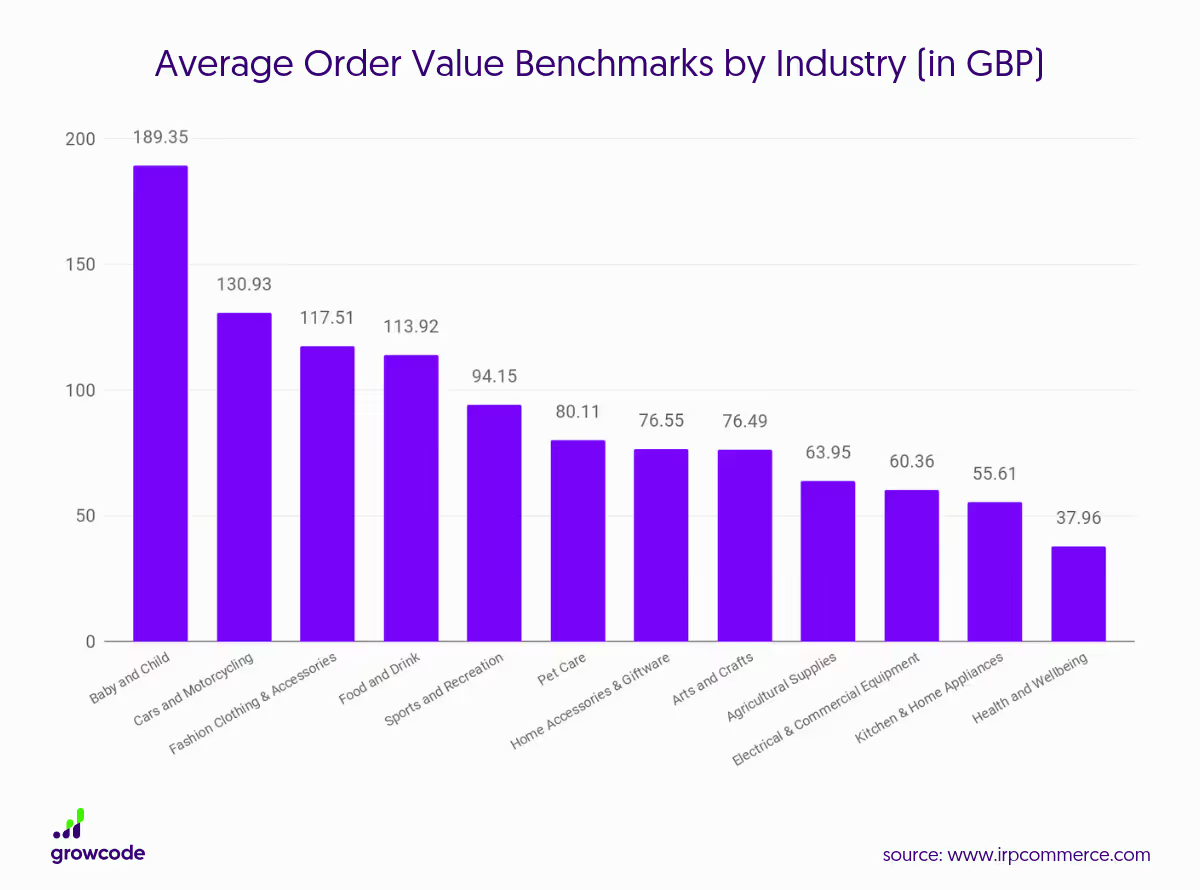
Tracking AOV helps eCommerce marketers measure the effectiveness of sales funnel and their upselling and cross-selling strategies. By identifying high-value orders, you can optimize product recommendations, offer bundle deals, or implement minimum order value thresholds to increase AOV, generate leads, thereby generating leads and boosting revenue and profitability.
4. Return on Ad Spend (ROAS)
ROAS measures the revenue generated for every dollar spent on advertising. To calculate ROAS, divide the revenue generated from advertising by the advertising cost.
ROAS provides eCommerce marketers with insights into the key performance indicators of their advertising campaigns, allowing them to allocate budgets effectively. It helps identify which ad campaigns or channels deliver the highest returns, enabling marketers to optimize their advertising efforts and maximize the impact of their ad spend.
Here are a few common ways to increase ROAS:
- Audience Targeting. Refine your audience targeting to ensure that your ads are reaching the right people who are most likely to be interested in your products or services. Utilize audience segmentation based on demographics, interests, behavior, or previous interactions with your brand.
- Ad Creative Optimization. Use attention-grabbing visuals, persuasive copy, and clear calls-to-action (CTAs). A/B testing different variations of your ads can help identify which elements drive better performance and higher ROAS.
- Conversion Rate Optimization (CRO). Ensure your user experience is seamless, page load times are optimized, and the checkout process is smooth. Increasing conversion rates can generate more revenue from your advertising campaigns and improve ROAS.
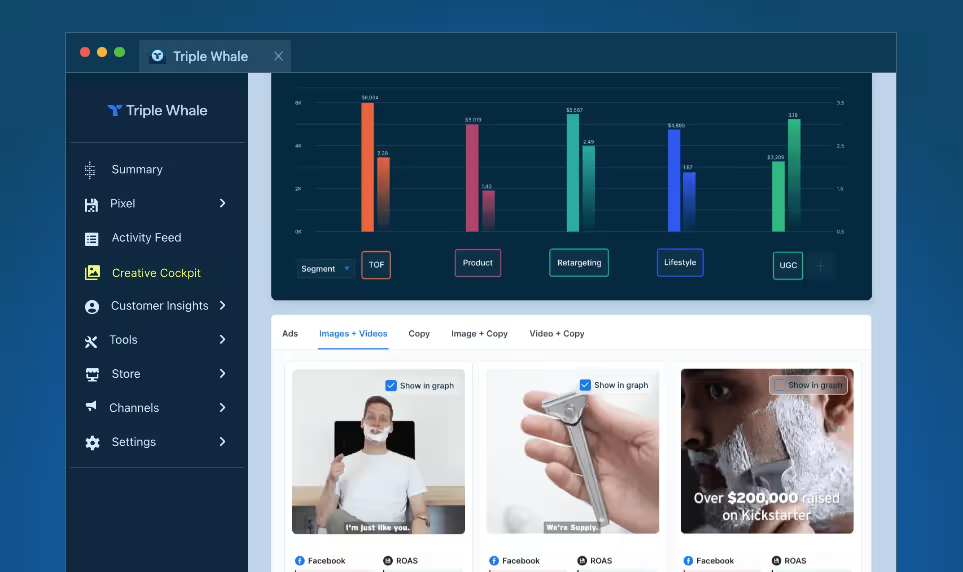
5. Customer Lifetime Value (CLV)
CLV or LTV represents the predicted revenue a customer will generate over their entire relationship with the business. Calculating CLV involves estimating the average purchase value, purchase frequency, and customer lifespan.
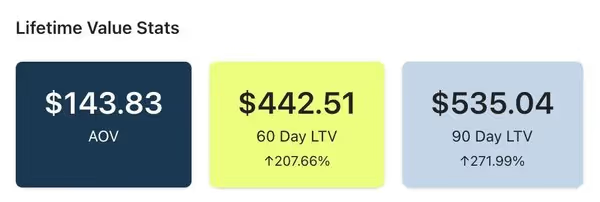
Tracking CLV helps eCommerce marketers understand the long-term value of their customer base and guides decision-making regarding customer retention strategies. By identifying high CLV segments, marketers can personalize marketing campaigns, offer loyalty programs to new customers, and prioritize customer satisfaction initiatives, ultimately fostering customer loyalty and maximizing revenue.
6. Customer Retention Rate
Customer retention rate measures the percentage of customers who continue to make purchases from the business over a specific period. To calculate retention rate, divide the number of retained customers by the total number of customers.
Tracking customer retention rate is crucial for eCommerce marketers as it reflects the effectiveness of their retention strategies and the overall customer experience. Marketers can identify opportunities to improve customer satisfaction, the in longer the sales cycle, the longer sales cycles the sales cycle, increase repeat purchases, and implement targeted retention campaigns by monitoring retention rate.
Effective email marketing is really the key to customer retention: namely, developing strategic campaigns focused on nurturing customer relationships and driving repeat purchases.
Try segmenting your email list based on customer preferences, purchase history, and engagement levels, and then send personalized and relevant content to each of those lists. Send them product recommendations, exclusive offers, and informative newsletters. You’ll be well on your way to increasing retention.
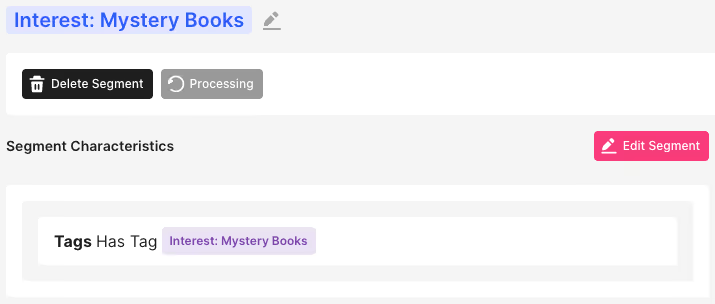
7. Cart Abandonment Rate
Cart abandonment conversion rate: measures the percentage of users who add items to their shopping carts but do not complete the purchase. To calculate the cart abandonment conversion rate above, divide the number of abandoned carts by the number of initiated carts, and multiply by 100 to get the percentage.
Cart abandonment is a common challenge for eCommerce businesses, and tracking cart abandonment rate is crucial for understanding the effectiveness of the checkout process and identifying areas for improvement. High cart abandonment rates indicate potential barriers or friction points that prevent customers from completing their purchases.
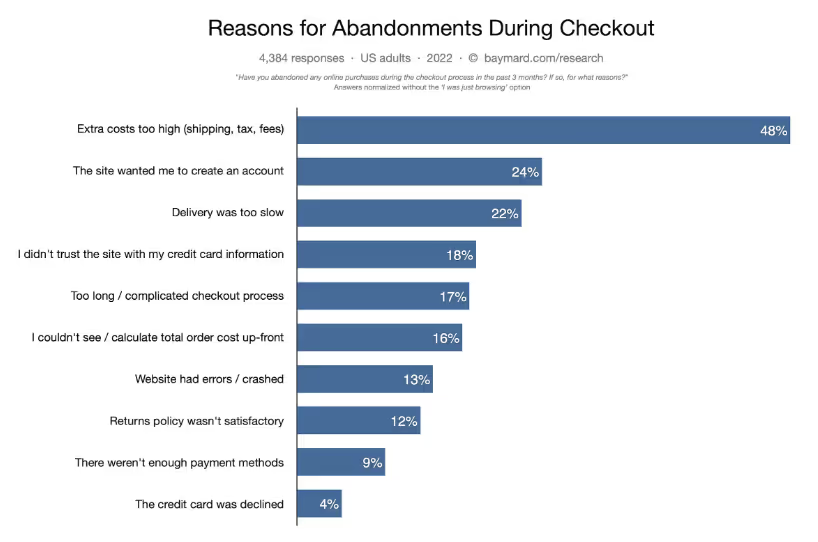
By monitoring cart abandonment and conversion rate above, you can gain insight into the reasons behind abandonment. You can analyze the customer journey, checkout flow, and payment options to identify any issues or roadblocks. For example, a complex checkout process, unexpected shipping costs, or lack of payment options may lead to higher cart abandonment rates.
Better features. Better support. Better customer experience.
Get all the same features you need with a more intuitive UI you’ll love. Experience the difference.
How Triple Whale helps eCommerce brands scale through attribution
At Triple Whale, we’re pretty damn passionate about marketing attribution model. That’s why we developed Triple Pixel. Triple Pixel takes the guesswork out of ad spend, allowing eCom brands to make better decisions with better data and discover a path to profitable growth.
Using Triple Pixel allows you to more accurately attribute ad clicks (from places like Facebook, Google, Snapchat, Pinterest & TikTok) to real conversions.
For example: did your customer click on an ad two weeks ago but purchased today through a Sedlane campaign? With Triple Pixel, you can accurately attribute that revenue directly back to the campaign, ad set, and ad they originally clicked from.
Attribution is hard, and just about every pixel misses purchases; other pixels use data modeling to make up the difference, giving you the real and raw data. If a visitor comes from an integrated platform or has UTM parameters and makes a purchase, we’ll show you a buyer journey and every step the buyer took to get there.
Triple Pixel gives you:
- Aggregated user journey, from first touch point all the way through purchase.
- Full-funnel tracking (PageView → Purchase), meaning no more dropped, ghost or missed events.
- Multiple attribution models: Find what attribution model is most useful to your business, including First Touch, Last Touch, Linear and Time Decay.
- Predictive ROAS by Campaign, Ad Set & Ad. Should I scale or pull back? With our predictive LTVs, you can place bigger bets with higher confidence.
- Much, much more.
Get in touch with a member of our team to see how Triple Pixel can improve your attribution and overall growth.
Attribution for DTC Marketers FAQs



%20(1).avif)




%20(1).avif)
%20(1).png)
.avif)


.avif)
.avif)


.avif)





.avif)



.avif)





.avif)


.avif)

.avif)
.avif)

.avif)
.avif)

.avif)

.avif)


.avif)
.avif)
%20(1).avif)
.avif)









.avif)











.avif)
.avif)

%20(1).avif)

%20(1).avif)



.avif)


























.avif)











































.avif)



.avif)




























.avif)



.avif)

.avif)

.avif)
.avif)


.avif)













.avif)

.avif)










.avif)












.avif)






































.avif)



.avif)

.avif)

.avif)
.avif)

.avif)
.avif)

.avif)

.avif)

.avif)

























